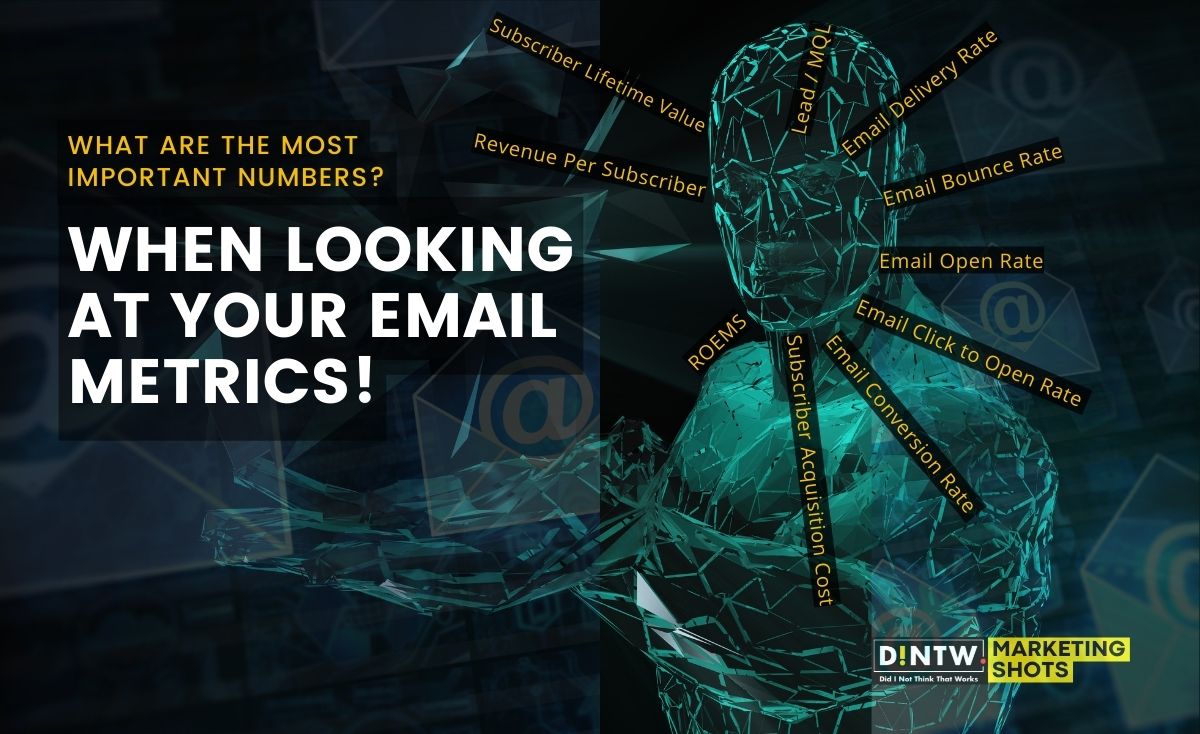Do we need to mention the importance of sending emails? Nonetheless, even if we do, when looking at your email marketing metrics, determine if your email marketing strategy is effective, as the revenue opportunity for every dollar spent on email marketing is $44.
So what is the essential email marketing metric you need to track and understand in your email marketing campaigns? As a brand, you want to be able to put an exact number on what actions are responsible for generating leads or sales. For example, you could see that leads generated by email marketing will eventually turn into sales at a rate of 1:10 if you follow up with your leads with telemarketing to close the deal.
Before we move ahead, let’s do a reality check. Have you built your customer journey map for email marketing campaigns yet? As part of their digital marketing strategy, marketers must align their user journey maps with various online and offline marketing aspects.
Have you established objectives for your email marketing campaigns? For example, do you want to build an email list, generate leads, or increase website traffic? These objectives should be derived from your website’s content strategy and 1correspond to the user journey map.
In this article, we will examine the essential email metrics. The success of your email marketing campaigns depends on your ability to analyze and act upon the email marketing KPIs.
What are the most decisive email marketing metrics?
The success of your email marketing campaign can be measured in several ways. These are a few most critical email performance metrics to track.
Email Delivery Rate
- Measured Outcome – The percentage of successfully delivered emails out of the total number of emails sent.
- How to calculate Email Delivery Rate – (No of emails successfully delivered ÷ Total number of emails sent) X 100
- Example – 80 emails successfully delivered ÷ 100 emails sent = 80% delivery rate
Measure Email Delivery Rate at the beginning of email marketing campaigns. This indicates two aspects of your email infrastructure and email addresses.
- Are you using IPs with a bad reputation? cold email impacts email deliverability
- What is the effectiveness of your email marketing software?
- What is the quality of your email list or subscriber? Impacts clickthrough rate and email engagement
A deliverability rate of less than 99% is risky, as the email software platform will block you after repeated offences. It indicates to the email service provider that the sender regularly sends emails and maintains a clean database. Next time, you should clean your email list before sending an email campaign.
An extension of this metric is,
Email Bounce Rate
- Measured Outcome – The percentage of bounced emails out of the total number of the email recipient.
- How to calculate Email Delivery Rate – (bounced emails ÷ Total recipients) X 100
- Example – 20 emails failed to deliver ÷ 100 emails sent = 20% is the bounce rate
Most email service providers consider a bounce rate of more than 2% unacceptable. If your IP’s bounce rate exceeds 2%, you will receive a warning; if it reaches 10%, the marketing automation service provider will cease all email services.
Although a delivery rate of 99% is excellent, it does not guarantee email opens. Therefore, pay attention to the open rates when looking at your email metrics.
Email Open Rate
- Measured Outcome – The percentage of emails opened out of the total number of emails delivered.
- How to calculate Email Delivery Rate – (No of successful email opens ÷ Total number of emails delivered) X 100
- Example – 55 emails opened ÷ 100 emails delivered = 55% is the email open rate
Increase Open rates with the help of a catchy subject line and some personalization.
Emails with personalized subject lines have 2.6X more open rates and 2x more response/clickthrough rates. Amazon, Flipkart, Zara, Marks & Spencer, Nike, Zomato, Swiggy, and other e-commerce platforms use personalization to achieve up to 50% conversion rates.
Choosing a subject line that both attracts the reader’s attention and is relevant to the buyer’s journey is crucial.
It would be best if you thought of your email subject lines as a preview for a film. Provide a “Preview” to establish the tone, and use the hero’s name in the “From” section. According to surveys, 68% of email recipients consider the sender’s name before clicking on a link.
Email Click to Open Rate or Click Through Rate (CTR)
- Measured Outcome – The percentage of people who opened your email clicked on one or more of the links presented in the email.
- How to calculate Click Rate – (Total Clicks ÷ No of email opened) X 100
- Example – 55 clicks ÷ 10,000 email open = 5.5% is the email click to open rate
Generally, CTRs are calculated by dividing the number of clicks by the total number of emails sent. However, we at DINTW do not find this metric to be reliable. Your subscriber will not click on the embedded links without opening the email. Open Rates are the first benchmark, followed by CTR, or Click Through Rate.
Click Rate is directly linked to ROI by creating sales opportunities. This metric tests email content and essential email marketing statistics for an email marketer. When subscribers click on a link in an email, they will visit the website, order a product, schedule a service, or fill out a lead form. These measures will advance the subscriber to the subsequent phase of the consumer purchasing journey.
When looking at your email marketing metrics, always aim for a 1% or higher CTR to ensure a respectable conversion rate. Improving CTR is an ongoing process, so use A/B testing in your email marketing campaigns. A/B testing is an excellent method for determining which email subject line, design, message, and offer produce the highest CTRs. You can ultimately fine-tune your campaigns to attain the highest possible CTRs and conversion rates by trying different combinations of email subject lines, creative, content, and offers.
Email Conversion Rate
- Measured Outcome – The percentage of email recipients who clicked a link and completed an action, such as generating leads, purchasing, or downloading a file.
- How to calculate Conversion Rate – (Number of people who took the desired action ÷ No of emails opened) X 100
- Example – 15 conversions ÷ 10,000 email open = 0.15% is the email click to open rate
The conversion rate is the ROI metric for every email marketing campaign. Use revenue terms to calculate the conversion rate in an e-commerce or e-services business. However, due to longer sales cycles, conversion rates are used in B2B transactions to assess the status of the consumer journey. The organization must have a customer journey map dedicatedly to email marketing with clear goals and ROI at each stage of the user buying. Using Google Analytics as an example, we can set goals for ebook downloads, a thank you page, cart additions, lead forms, and other metrics.
Email Subscriber Acquisition Cost
- Measured Outcome – Cost of acquiring each subscriber who is a qualified lead or prospect with whom you intend to engage in an email marketing campaign.
- How to calculate SAC (for a given period) – Total cost of email marketing ÷ Number of new subscribers
- Example – Rs 1,50,000 email marketing cost ÷ 150 unique subscribers = Rs10,000 is the SAC
You can find out from SAC how much it costs to add new subscribers. These subscribers are from your target market and have the appropriate email address, mobile number, and other crucial details as your business require.
To determine SAC, you must allocate a cost to every email marketing campaign.
- The licence or subscription cost of the marketing automation tool,
- the cost of creative and content development, and
- the cost of database administration (usually in the case of B2B business). In the case of B2C and e-commerce businesses, a portion of the marketing budget should be allocated to email marketing efforts.
Email Subscriber Lifetime Value, or SLV
- Measured Outcome – Estimated revenue potential from each subscriber during his relationship with the brand.
- How to calculate SLV (for a given period) – Subscriber Value * Average Number of Emails that a Subscriber Opens and Clicks (before unsubscribing/responding) over a period of time. Subscriber Value = Average Transaction Value * Number of Transactions.
- Example – Rs 1500 average transaction value * 10 number of transactions = Rs 15000 subscriber value. Then, Rs. 15000 Subscriber Value * 10 emails in 12 months = Rs. 150,000 Subscriber Lifetime Value.
When a brand satisfies a customer’s tastes and preferences, they make multiple purchases across multiple channels. This ultimately facilitates a more cost-effective advertising strategy by increasing brand loyalty. For example, Coca-Cola’s marketing strategy includes “hyper-personalization” of its advertisements for specific audiences across all media forms and email marketing to supplement other forms of marketing.
Therefore, when looking at your email marketing metrics, it is recommended that you calculate the Subscriber Lifetime Value or the amount your business expects to earn from each subscriber throughout the relationship with your brand.
Email Revenue Per Subscriber, RPS
The SLV must be divided by the company’s profit margin, known as RPS, or Revenue Per Subscriber, to obtain a more precise number when looking at your email marketing metrics. This email metric lets you track your growth rate and compare it to industry leaders. By the preceding example, we might calculate a 15% profit margin and arrive at an RPS of Rs 22,500. It can then be used to compare the performance of different customer segments or categories by dividing the RPS by the SLV of each segment.
Email Return on Email Marketing Spend, ROEMS
How much does your email marketing cost? Map it out like you would with sponsored search/media and ROAS.
- Measured Outcome – Return on investment from email marketing spends
- How to calculate ROEMS – Total Revenue attributed to Email Marketing ÷ Total cost of Email Marketing
- Example – Rs 50,00,000 Total Revenue ÷ Rs 25,00,000 Total Cost of Email Marketing = 2.0 ROEMS.
The attribution of direct revenue from email marketing in comparison to email marketing costs is difficult to do when calculating a ROEMS metric. Email marketing has traditionally been viewed by B2C and e-commerce companies as a top-of-the-funnel activity. In cases of abandoned shopping carts, cold customers, etc., e-commerce businesses use it as a tool to win back customers.
This has changed because the average worker spends 20 hours weekly at work, and email has evolved into a direct attention channel. Customers look at the value of a B2B email marketing campaign in terms of leads generated. Still, ROI calculations typically ignore the value email can have at the top of the funnel (i.e., driving qualified leads to sales). Due to a longer sales cycle and the reliance on trust in B2B transactions, this metric provides a strong use case for estimating ROI.
“Email marketing’s ROI has proven to be the highest of any B2B marketing channel.” It has been shown to generate over $40 for every dollar spent.
According to business2community.com
Additional Simple Metrics to Monitor Every Email Marketing Campaign
Remember the following information when looking at your email marketing metrics from the perspective of integrating CRM and Marketing Automation Software.
- Contact Nurturing: How did your email support the user’s journey? By examining the marketing touchpoints along users’ channels, you can ascertain what is affecting users or what has the most significant influence on their decision to convert.
- Behavioural Analytics: Through A/B testing, open tracking, and identifying IP addresses, learn how users interacted with the email campaign.
- Leads/MQLs: How many leads were generated due to your email? To measure this metric, integrate your CRM database and CRM team to track form submissions from your email campaigns. This number may be less significant than the number of leads who ultimately make a purchase, so follow this conversion in your CRM system to determine the quality of the leads you send to the sales team.
- Opportunities: How many of your generated leads resulted in meaningful business opportunities? Have you received a single opportunity from a single lead or multiple opportunities from a single contact? This can be difficult to quantify, but if you use the same integrations, you can track the opportunities generated by your email marketing campaigns in your CRM system.
“When designing a customer journey, deviation represents one of the greatest challenges of the modern digital marketing era. Your customer is randomly switching between channels. It is returning to you through various attribution channels. Therefore, is your email journey robust enough to accommodate these deviations? Is the email’s subject line or offer skyrocketing? In addition to ensuring privacy, new Apple email rules, and GDPR compliance, it is essential to take care of your global audience.” – Ram Jalan, Chief Digital Officer, DINTW.
“When looking at your email marketing metrics, deviation represents one of the greatest challenges of the modern digital marketing era. Your customer is randomly switching between channels. It is returning to you through various attribution channels. Therefore, is your email journey robust enough to accommodate these deviations? Is the email’s subject line or offer skyrocketing? In addition to ensuring privacy, new Apple email rules, and GDPR compliance, it is essential to take care of your global audience.” – Ram Jalan, Chief Digital Officer, DINTW.
Let us collaborate with your brand to make your marketing automation and email marketing investments profitable for your business and engaging for your customers. DINTW, a leading Digital Marketing Agency in Delhi, provides marketing automation and email analytics and marketing services to over 50 clients worldwide. Measure, Mentor, and Monitor is a three-step process that has been successful for all of DINTW’s clients, resulting in a 90% renewal rate.
Check out other critical digital marketing trends for 2023 ↗ to know more about what is crucial for your digital strategy.






